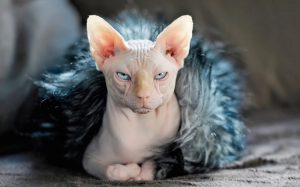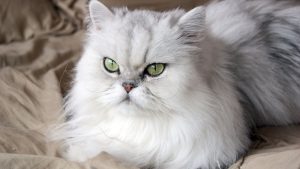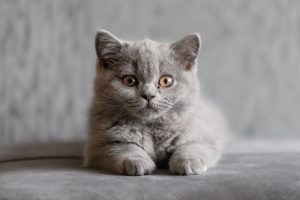The Maine Coon, also known as the “American long-haired cat,” is one of the largest and oldest cat breeds in North America. They are not only prominent for their massive size but also impressive with their thick coat, tufted ears similar to a lynx, and a friendly, intelligent, and easygoing nature. The Maine Coon is known as a “gentle giant,” bringing a sense of warmth and affection to any family. With its unique personality and distinct physical traits, the Maine Coon has become one of the most popular cat breeds in the world. Let’s learn more about this breed with KnowAllAnimals.
Maine Coon Cat Details
- Size: Very large—one of the largest cat breeds in the world
- Weight: Male: 6–10 kg (13–20 lbs), Female: 4–6 kg (9–13 lbs)
- Length: Can grow up to 50-75cm long (including the tail)
- Coat: Long, dense, water-resistant; thicker fur around the neck resembling a lion’s mane
- Eyes: Large, round, and can be yellow, green, blue, or copper
- Tail: Long, bushy, similar to a raccoon’s tail
- Temperament: Gentle, friendly, intelligent, affectionate, great with children
- Vocalization: Gentle, often making “chirps” or “trills”
- Lifespan: Average 12–15 years.

1. Origin and Development History
The Maine Coon, often called the “gentle giant” of the cat world, is one of the oldest cat breeds originating from North America, specifically the New England region of the United States. Although famous for its large size and thick coat, the breed’s origin is shrouded in legends and folklore, which adds to its special charm. Let’s explore the interesting theories and legends about the Maine Coon’s origins and its journey of development over time.
1.1. The Hybrid Theory: Cat and Wild Animal
One of the oldest legends about the Maine Coon is the theory that it is a result of a cross between a domestic cat and a raccoon or an American bobcat. This story arose because Maine Coons have similar features to raccoons, such as a dense coat and a long, bushy tail. Their resilience and ability to withstand cold also hint at a wild animal heritage.
However, scientifically, this is impossible because cats and animals like raccoons or bobcats are different species and cannot interbreed. This theory is believed to be simply a folk explanation for the Maine Coon’s unique appearance and a way to illustrate their high adaptability to the harsh climate of the Maine region.
1.2. The Ship’s Cat Theory
A more plausible and popular theory about the origin of the Maine Coon is the ship’s cat theory. In the 18th and 19th centuries, European ships frequently docked in Maine, bringing cats on board to control rodents that damaged cargo. Long-haired cats from Europe, especially Angoras from Turkey or Norwegian Forest Cats, may have been brought to America this way by sailors. When the ships docked in Maine, these cats came ashore, bred with local cats, and thus created the Maine Coon breed.
The coast of Maine was, at that time, a center of the shipbuilding industry and a common stop for many European sailors. Many of them settled in coastal towns in Maine and brought their beloved cats with them. The skilled hunting ability of these cats further supports the plausibility of the “ship’s cat” theory as the ancestor of the Maine Coon.
1.3. The Story of Captain Charles Coon
Among the ship’s cat legends, the story of Captain Charles Coon is one of the most beloved. In the 1800s, Captain Charles Coon was a famous figure in New England, regularly docking at the region’s ports with his well-cared-for long-haired cats. Whenever his ship docked, his cats would go ashore, mate with local feral cats, and produce special long-haired kittens.
Local people began to call these long-haired cats “Coon’s Cats,” and this name was eventually modified to “Maine Coon” to refer to the unique cat breed of the region. Although there is no clear historical evidence for this story, the tale of Captain Charles Coon has become a charming and lively part of the legend surrounding the Maine Coon’s origins.
1.4. The Viking Cat Theory
According to another theory, the Maine Coon may be a descendant of the Norwegian Forest Cat, an ancient breed from Northern Europe. This theory suggests that the Vikings, Nordic explorers, may have brought Norwegian Forest Cats with them to North America around the 10th century. The Vikings often carried cats on their ships to protect food supplies from rats. If this theory is true, the Maine Coon may have its roots in the ancient voyages of the Vikings.
Norwegian Forest Cats and Maine Coons share many similarities, such as a thick, long coat that helps them adapt well to cold climates. Nonetheless, this remains an unproven theory and is largely based on the physical resemblance between the two breeds.
1.5. Recognition by International Cat Associations and the Revival
In 1968, the Maine Coon Breeders and Fanciers Association (MCBFA) was founded with the goal of protecting and promoting the breed. By 1975, the Maine Coon was officially recognized by the Cat Fanciers’ Association (CFA) as a legitimate breed and was allowed to participate in competitions.
The revival of the Maine Coon was not limited to the U.S. but spread to other countries around the world. By 1985, the Maine Coon was recognized as the official state symbol of Maine, a significant milestone in the breed’s journey of development and recognition.
Although the origin of the Maine Coon is surrounded by many legends and theories, one thing is undeniable: this breed has had a long journey to establish itself and become a part of American culture and history. With its natural beauty, high adaptability, and incredible resilience through many ups and downs, the Maine Coon is not just a pet but a living legend in the hearts of cat lovers worldwide.
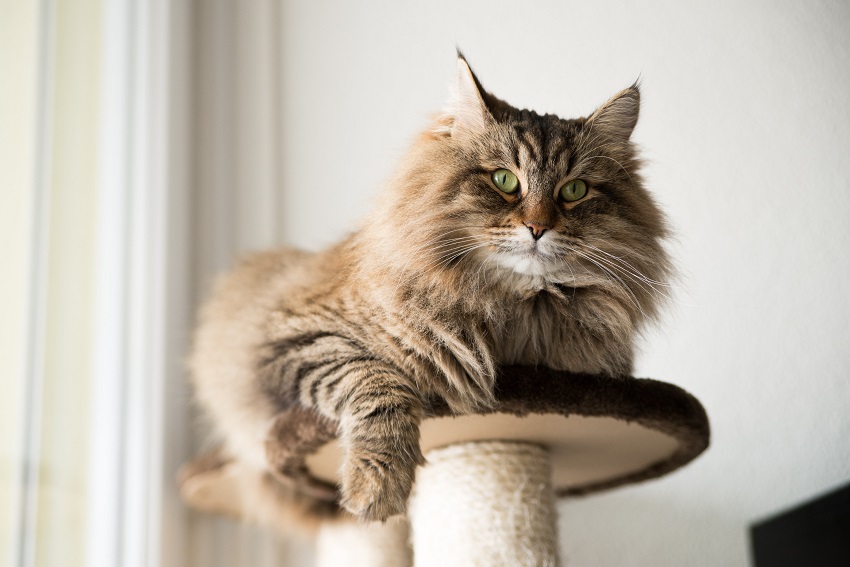
2. Distinctive Physical Characteristics
2.1. Size and Build
The Maine Coon is considered the largest breed of domestic cat today. They can reach a length of 50–75 cm (20–30 inches), including the tail, with an average weight of 6–10 kg (13–22 lbs) for males and 4–6 kg (9–13 lbs) for females. Some individuals can even weigh up to 12 kg (26 lbs). Maine Coons have a muscular, sturdy build with a broad chest, a long body, and strong legs. Their heads have a distinctive square shape with large ears that have tufts of fur protruding from them, giving them a unique and powerful appearance.
2.2. Coat and Colors
A Maine Coon’s coat is very long and thick, with a sleek, water-resistant outer layer and a soft inner undercoat for insulation. The fur around their neck is long and fluffy, like a lion’s mane, adding to their “regal” look. Their long, bushy tail can be wrapped around their body to keep warm while sleeping. Maine Coons come in a wide variety of colors and patterns, including tabby, bi-color, calico, and even solid white.
2.3. Eyes and Ears
The eyes of a Maine Coon are large, oval-shaped, and come in various colors, from green to copper, blue, or even the special odd-eye. Their pointed ears have prominent tufts of fur at the tips, similar to a lynx, which creates a wild and unique appearance.
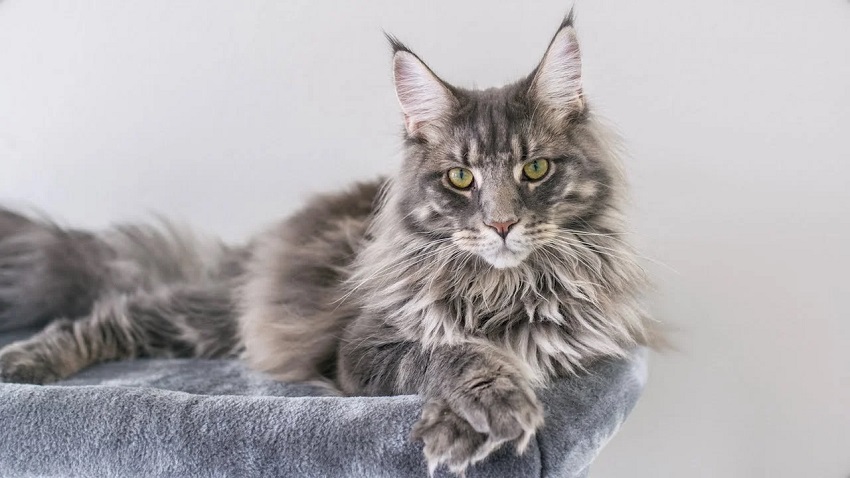
3. Temperament and Behavior
Maine Coons are loved not only for their appearance but also for their gentle and friendly nature. They have been nicknamed the “dog-like cat” because of their interactive nature and deep affection for humans.
- Friendly and Easygoing: Maine Coons are highly adaptable and generally enjoy the company of others. They get along well with children and other pets, including dogs, and are rarely aggressive.
- Intelligent and Curious: Maine Coons have high intelligence and are quick learners. They can easily learn simple games and commands, and even play fetch just like a dog.
- Love of Water: Unlike many other cat breeds, Maine Coons often enjoy water. They might like to jump in a bowl of water or even join you in the bathtub if given the chance.
- Soft “Voice”: Maine Coons rarely meow loudly. Instead, they often communicate through gentle sounds like purrs, and charming “chirps” and “trills,” which makes them even more captivating.
4. Caring for a Maine Coon Cat
4.1. Coat Care
With its thick, long fur, a Maine Coon requires brushing at least once a week to prevent tangles and matting. Brushing not only helps keep their coat clean but also provides a time for you to bond with your pet. While a Maine Coon’s fur is water-resistant and sheds less than other breeds, regular brushing is still essential to keep their coat shiny and well-maintained.
4.2. Diet and Nutrition
Maine Coons need a balanced, high-protein diet to maintain their muscle mass and energy levels. Because of their large size, they require more food than most other cat breeds. However, controlling their portions is crucial as they can easily become obese if overfed. To maintain optimal health, it’s best to divide their food into smaller meals throughout the day rather than free-feeding.
Maine Coons enjoy treats like pate, chicken, and beef. But it’s important to keep these things in mind:
- You should combine dry food with wet food to prevent liver and kidney diseases, which can result from eating only dry food for an extended period.
- You should not give them too much fatty food, as this increases their risk of obesity and can shorten their lifespan.
- You need to establish a reasonable daily feeding schedule to ensure they don’t get hungry, given their large size compared to other cat breeds.
4.3. Creating an Active Environment
As an active breed, Maine Coons need a space to run and play, as well as toys to stimulate them. Cat wands, climbing structures, and puzzle toys are excellent choices to help them burn off energy and prevent boredom. Maine Coons also love to climb, so a tall, sturdy cat tree is a worthwhile investment.
4.4. Common Health Issues
Despite being a robust and healthy breed, Maine Coons are prone to a few common genetic conditions:
- Hypertrophic Cardiomyopathy (HCM): This is a hereditary heart disease that causes the heart muscle to thicken, which can lead to heart failure. Genetic testing and regular vet check-ups are necessary for early detection and prevention.
- Hip Dysplasia: Due to their large size and weight, Maine Coons can develop problems with their hip joints, which causes difficulty and pain during movement.
- Spinal Muscular Atrophy (SMA): This disease causes weakness in the hind limb muscles, making it difficult for the cat to walk. Genetic testing can help prevent this condition.
Owners should thoroughly research and choose to buy cats from reputable breeders who have conducted health screenings to ensure their cat does not carry serious genetic diseases.
5. Ideal Living Environment for a Maine Coon
5.1. Living Space
Maine Coons are well-suited for both indoor and outdoor living (if a safe space is available). While they enjoy being indoors, they still need a spacious area to run and explore. Maine Coons love high places, so providing climbing trees or high-up perches is a great way to satisfy their natural instincts.
5.2. Social Environment
Maine Coons are a social breed that enjoys being around people and other pets. They are a good fit for families with children and elderly people. However, they don’t like to be left alone for long periods, so they are best suited for families where someone is home often.
5.3. Temperature
With their thick coats, Maine Coons can handle cold climates well. However, in the summer, they need a cool space to avoid overheating.
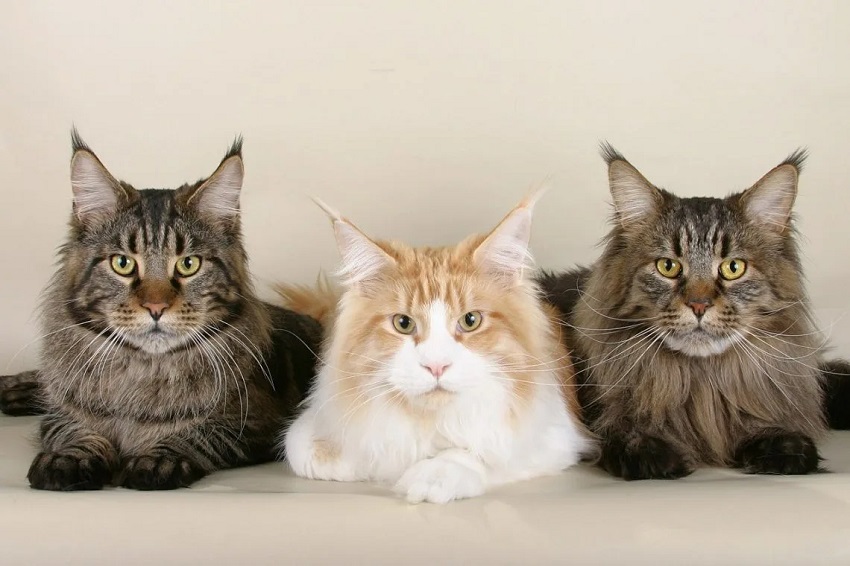
6. Reasons to Get a Maine Coon Cat
6.1. Hunting Ability
Because of their origins as a wild forest cat, the Maine Coon breed has a very keen hunting ability. Therefore, when you have one in your home, you’ll gain a champion who can help you get rid of mice and other pests.
6.2. Intelligence
Maine Coons are exceptionally intelligent. They can understand what you are doing and what you want them to do. With proper training, they can become completely obedient and be a very useful addition to your life.
6.3. Gentle, Friendly, and Affectionate
Maine Coons are very friendly and gentle because they have been raised in human environments for hundreds of years. They also get along quite well with other pets in your home.
6.4. Highly Alert
Maine Coons are quite alert to strangers who enter their territory without permission. For this reason, many owners keep them to help guard their homes.
7. Maine Coon Pricing
Since Maine Coons are imported from the U.S., their prices can be quite high:
- Purebred Maine Coons with full documentation: Prices start from $2,000 USD and up.
- Spayed/neutered Maine Coons: Prices start from $1,000 USD.
- Maine Coon mixes: These range in price from 3 to 5 million VND, depending on the breed they’re mixed with, but this mix is said to be quite difficult to raise.
8. FAQs
1. How big do Maine Coon cats get?
Maine Coons are one of the largest domestic cat breeds. Males can weigh between 13–18 lbs (6–8 kg), and females between 8–12 lbs (3.5–5.5 kg), with some even larger.
2. Are Maine Coon cats good with kids and other pets?
Yes, Maine Coons are known for their gentle and friendly nature. They usually get along well with children and other animals, including dogs.
3. Do Maine Coons require special grooming?
Despite their long fur, Maine Coons have a silky coat that doesn’t mat easily. Weekly brushing is usually enough to keep their fur clean and healthy.
With their large size, friendly nature, and loyalty, Maine Coons are a wonderful companion for anyone who loves pets. They are not only a beautiful breed but also an affectionate, reliable, and easy-to-care-for friend if you are willing to invest your time and affection in them. The Maine Coon will bring much joy and laughter to any family.
References: https://en.wikipedia.org/wiki/Maine_Coon

